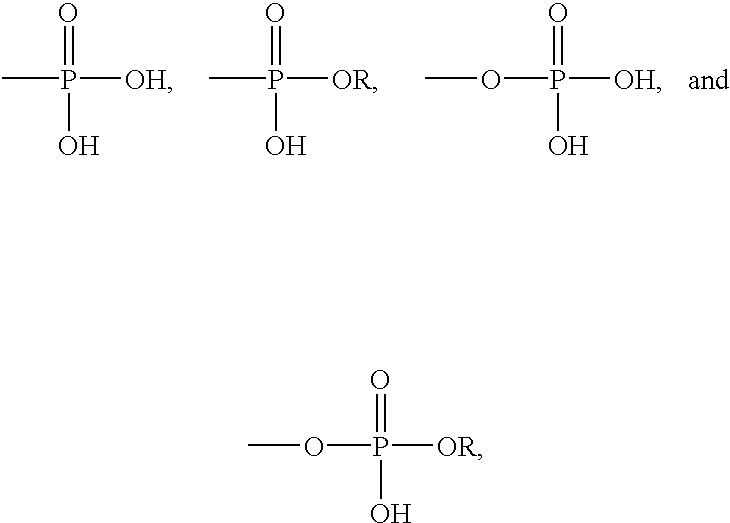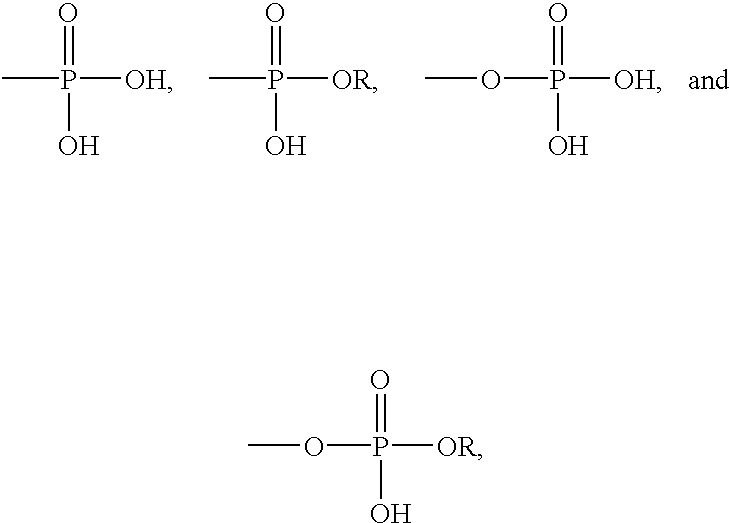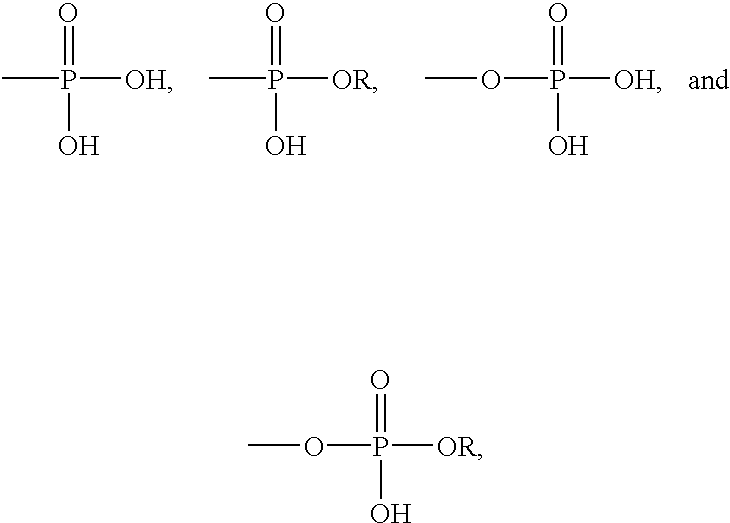Endodontic sealing compositions and methods for using such compositions
a technology of endodontics and compositions, applied in the field of adhesive resins, can solve the problems of difficult to achieve fine adaptation to the canal wall, difficult to completely seal the root canal from all ingress of fluids, laborious "later condensation, etc., and achieve the effect of rapid completion of the endodontic process, easy dredging, and convenient formation of channel holes
- Summary
- Abstract
- Description
- Claims
- Application Information
AI Technical Summary
Benefits of technology
Problems solved by technology
Method used
Image
Examples
example 1
[0106] A dual cure dental composition suitable as an endodontic sealing or filling material was prepared in two parts, with each part having the following components in the stated amounts:
1 Part 1 Triethylene Glycol Dimethacrylate 16.8% Benzoyl Peroxide 0.2% Diurethane Dimethacrylate 30.0% Bis glycerol dimethacrylate phosphate 5.0% Bismuth Chloride Oxide 40.0% Calcium Lactate Pentahydrate 6.0% Silicon Dioxide 2.0% Total Part 1: 100%
[0107]
2 Part 2 Triethylene Glycol Dimethacrylate 16.8% p-Tolyimino Diethanol 0.2% Phenyl bis(2,4,6-trimethyl benzoyl) Phosphine Oxide 0.5% Diurethane Dimethacrylate 30.0% Bis glycerol dimethacrylate phosphate 5.0% Bismuth Chloride Oxide 40.0% Calcium Lactate Pentahydrate 5.5% Silicon Dioxide 2.0% Total Part 2: 100%
[0108] The final composition was made by mixing equal amounts of Parts 1 and 2. Once mixed, the mixed composition was able to cure in less than 2 hours, thus preventing or inhibiting leaching of monomers and other materials from the root canal i...
example 2
[0109] An adhesive antimicrobial dental composition was formed having the following components and concentrations:
3 Percent by Weight Component of the Mixture calcium hydroxide 10.0% bis-glycerol methacrylate phosphate 5.0% urethane dimethacrylate 57.0% triethylene glycol dimethacrylate 6.0% titanium dioxide 1.0% calcium phosphate tribasic 10.0% dimethyl amino ethyl methacrylate 0.5% camphorquinone 0.2% barium sulfate 10.3%
example 3
[0110] In this example, an adhesive antimicrobial dental composition is formed having the following composition:
4 Percent by Weight Component of the Mixture bis 2-hydroxy ethyl methacrylate 10.0% barium hydroxide 25.0% calcium phosphate tribasic 5.0% benzoin ethyl ether 0.4% N-methylethanol amine 0.5% glycerol dimethacrylate 59.1%
PUM
| Property | Measurement | Unit |
|---|---|---|
| time | aaaaa | aaaaa |
| time period | aaaaa | aaaaa |
| time period | aaaaa | aaaaa |
Abstract
Description
Claims
Application Information
 Login to View More
Login to View More - R&D
- Intellectual Property
- Life Sciences
- Materials
- Tech Scout
- Unparalleled Data Quality
- Higher Quality Content
- 60% Fewer Hallucinations
Browse by: Latest US Patents, China's latest patents, Technical Efficacy Thesaurus, Application Domain, Technology Topic, Popular Technical Reports.
© 2025 PatSnap. All rights reserved.Legal|Privacy policy|Modern Slavery Act Transparency Statement|Sitemap|About US| Contact US: help@patsnap.com



